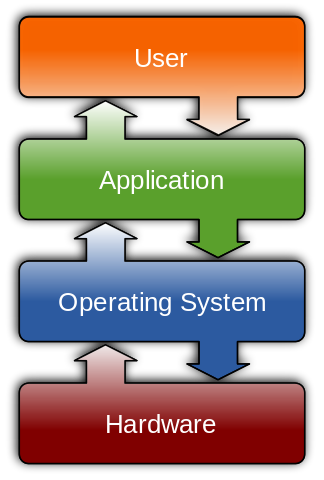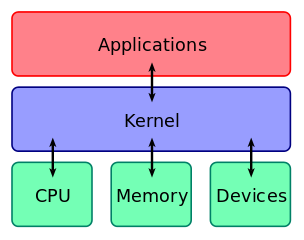Lesson 2: Operating Systems¶
| Homepage | Content | Slides | Video |
Warning
This lesson is under construction. Learn from it at your own risk. If you have any feedback, please fill out our General Feedback Survey.
What an Operating System is¶

Anatomy of an OS¶

- User Interface: What you interact with. Window Managers for instance.
- Application Layer: What developers use to make software run.
- Kernel: The Core of the OS. Makes communication between hardware and applications sane.
- Hardware: What does the actual computations. The thing your keyboard is plugged into.
Types of Operating Systems¶
Popular Operating Systems¶
- UNIX
- Linux
- Android
- Debian
- RHEL
- MacOS / Darwin
- FreeBSD
- Linux
- Windows
Flavors of Linux¶
- Debian
- Ubuntu
- LinuxMint
- RedHat
- RHEL
- Fedora
- Centos
- Gentoo
- ChromeOS
Slackware
ArchLinux
Exercise: Pop Quiz¶
- What are some different types of Operating Systems?
- What constitutes a ‘Distribution’ of Linux?
- How is Linux different from Windows? OSX?
- How is Debian different from Gentoo?
Further Reading¶
- OSU Courses:
- CS 312: Linux System Administration
- DOBC in class form
- Not currently offered, however course content is online
- http://cs312.osuosl.org
- OSU Courses:
- CS 344: Operating Systems I
Required course for all CS Students at OSU.
- Covers fundamentals of low-level programming concepts.
- Multi-threaded programming
- Read / Write operations
- Socket programming
- OSU Courses:
- CS 444: Operating Systems II
Required course for all CS Students at OSU.
- Covers kernel hacking and low-level OS design.
- IO / Process scheduling
- Building kernel modules
- Memory management
- Free Online Resources:
OSDev.org is a wiki dedicated to helping people develop their own operating systems. It’s a big leap from this lesson, but great if you’re interested in learning the nitty-gritty.
Operating Systems Design and Implementation by Andrew S. Tanenbaum is a classic in the world of OS Development. It’s also a big leap, but can teach you more about how Operating Systems work than you ever thought there was to know.
